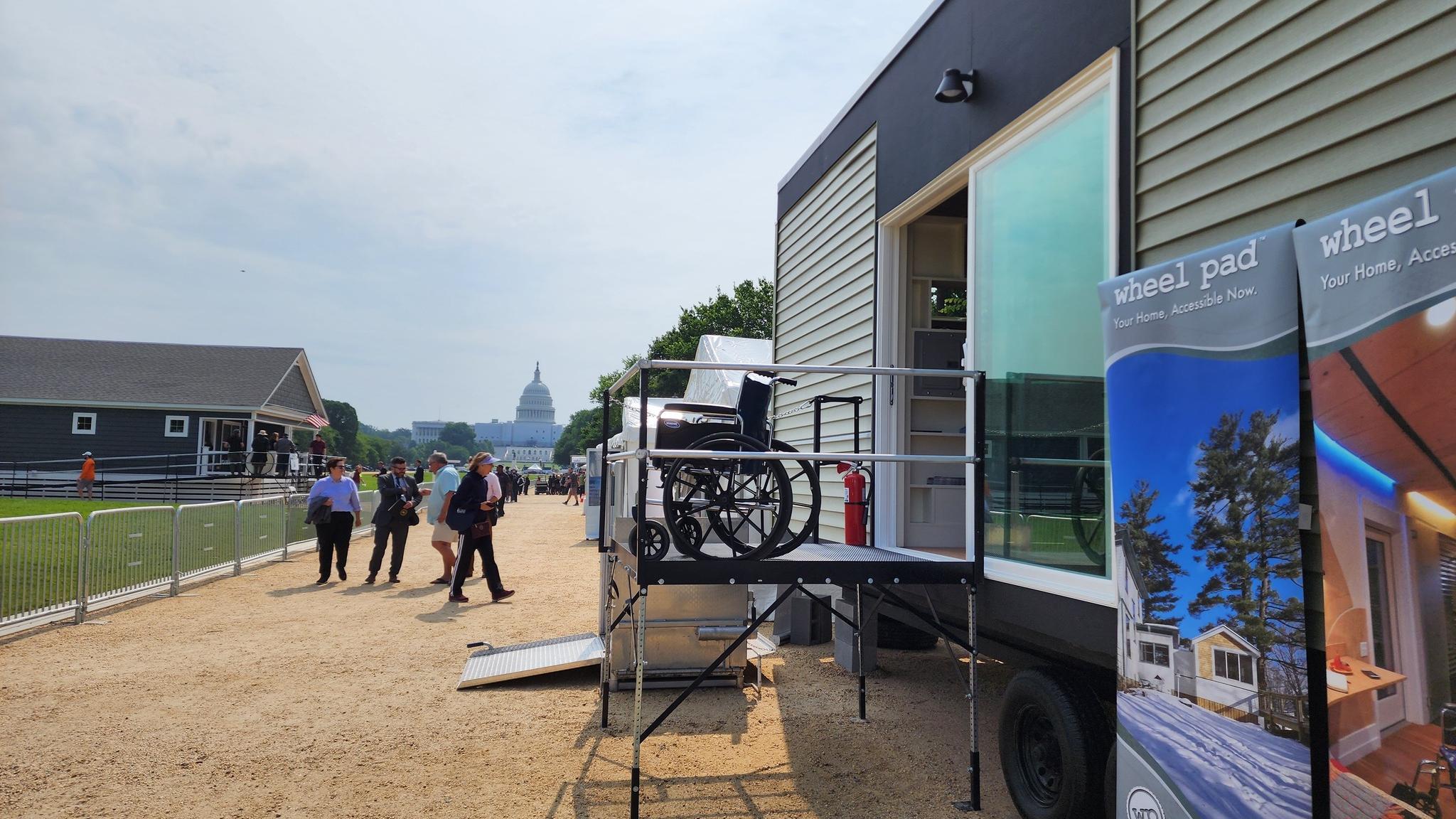In the United States, 1 in 4 adults, nearly 61 million people (about twice the population of Texas), have a disability that affects major life activities. That’s according to a 2023 fact sheet from the CDC, with a quarter having a mobility or cognitive disability.
There are many ways the country fails people with disabilities, from a lack of public accommodations to a pittance of disability leave and insurance. One egregious example is people with disabilities being able to live on their own—only 5% of housing in the US is accessible.
At the state level, Oklahoma has made people wait up to 13 years for long-term care in their homes.
An accessible home allows for independent living for persons with disabilities, with features like wider door and hallways and things like knobs and mailboxes changed to be easier to grasp at heights within reach.
Fortunately, disability advocates and progressive business owners, like Julie Lineberger, founder of WheelPad L3C {GBN}, are trying to make the world a friendlier place for bodies of all abilities—with the support of the US government.
“This is the Most Innovative Housing I’ve Seen in Years”
To understand where WheelPad and the future of accessible housing is headed, we first need to understand the beginning.
Lineberger and Joseph Cincotta founded the company—which constructs and rents completely accessible housing that can be attached to an existing house, allowing the resident independence while providing nearby loved ones and caregivers—after their godson became tetraplegic (another term for quadriplegic).
While presenting at Department of Housing and Urban Development’s (HUD) Innovative Housing Showcase in 2023, Lineberger said everyone she met had someone they knew of who could “use this [a WheelPad home],” from veterans’ families to those providing elder care.
WheelPad even caught the eye of HUD Secretary Marcia Fudge, who praised the concept.
“This is the most innovative thing I’ve seen in housing in years,” she said. “The fact that it can make an existing home accessible is the innovative thing.”
Lineberger called the interaction “exciting.”
Fulfilling a “Severe Lack” in Society
For many people with disabilities, home is not what it should be—that is, comforting and safe and instead, frustrating and sometimes dangerous.
WheelPad seeks to change that and is becoming more capable with support. Lineberger makes it clear that success is not a solo endeavor, discussing her business’ work with the nonprofit PHAT (Projects for Housing Accessibility and Training) and receiving government aid.
The business has numerous goals through these partnerships.
“We hope to provide training for caregivers, because there is a severe lack,” she explains. “That’s something HUD can assist us with, so now we’re following up with everyone we met at the showcase.”
There is no stopping Lineberger or the fight for disability rights.
“Over 1,300 people came through our small, 200-square foot installation,” she enthuses. One relationship built at the showcase could turn out to be key. “We were placed right next to the Veterans Administration’s Specially Adapted Housing Program. They supply grants for injured service members to renovate their house or make their house livable.”

The grants cover WheelPad homes, which the company has already taken advantage of with three projects so far.
Lineberger shares the story of a man who lived a year and a half longer than he thought he would after he moved into a WheelPad home. After he passed, his son called Lineberger and thanked her for the extra time he had with his father.
“That’s why we do this,” she says. “That’s why we need this relationship with HUD and other organizations.”
When the man died, the WheelPad was picked up, refurbished, and sent to the next person, but Lineberger dreams of a larger fleet and more means to help.
A Thriving Future for Every Body
The way Lineberger puts it, to keep the company going, they’ve “bootstrapped” it and faced all sorts of uphill battles.
When the manufacturers of WheelPad worked with took hits in the first years of the COVID-19 pandemic, they had to end WheelPad production. Lineberger and Cincotta interviewed several manufacturers, but none worked out and that’s when it hit them.
“We decided, well, you know, it's not rocket science,” she says earnestly. “Our first businesses architecture, we know how the building process works and so we started manufacturing our own last fall.”
The company took out a generously sized loan to start this new chapter and is looking into buying the land the new manufacturing facility sits on.
As a small company, Lineberger knows how challenging staying afloat is: “It’s important to keep putting one foot in front of the other. We’ve had financial issues, so that’s why we’re working with PHAT, because the work is too important.”
The work is far from done, but it’s on the precipice of taking great strides.



